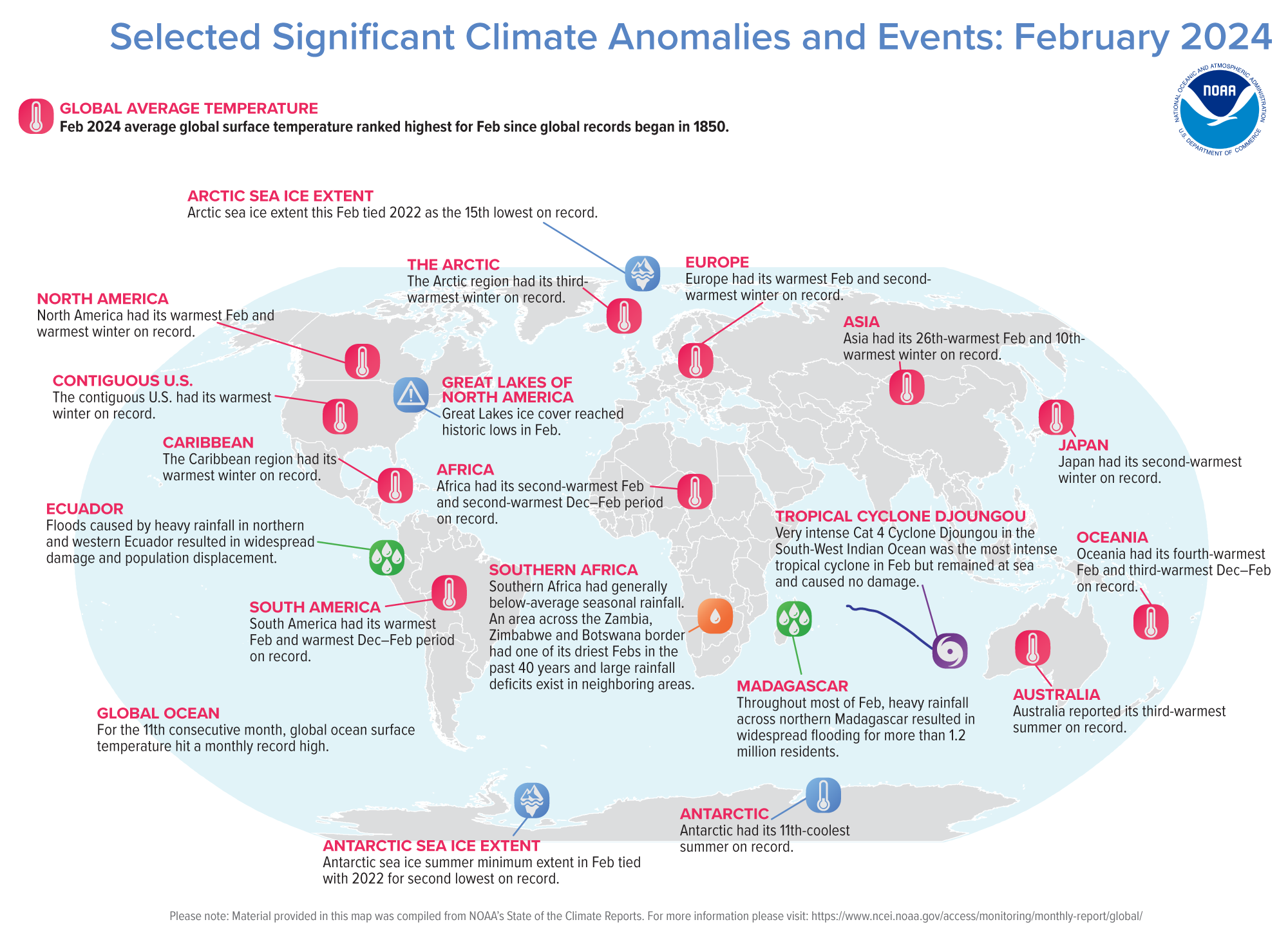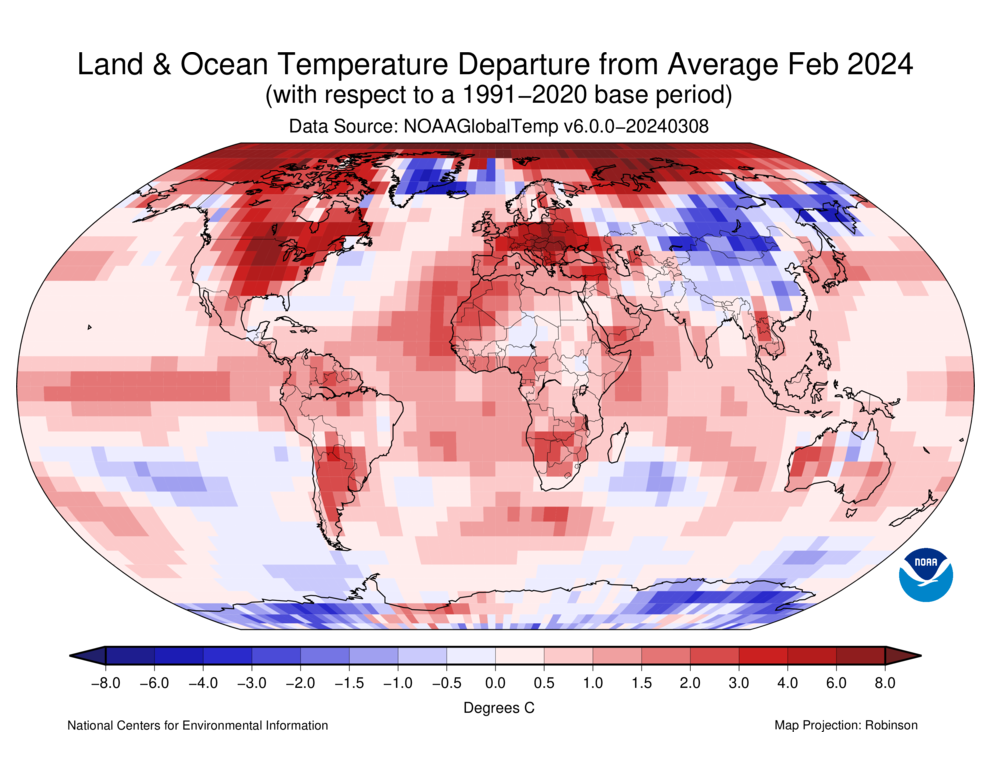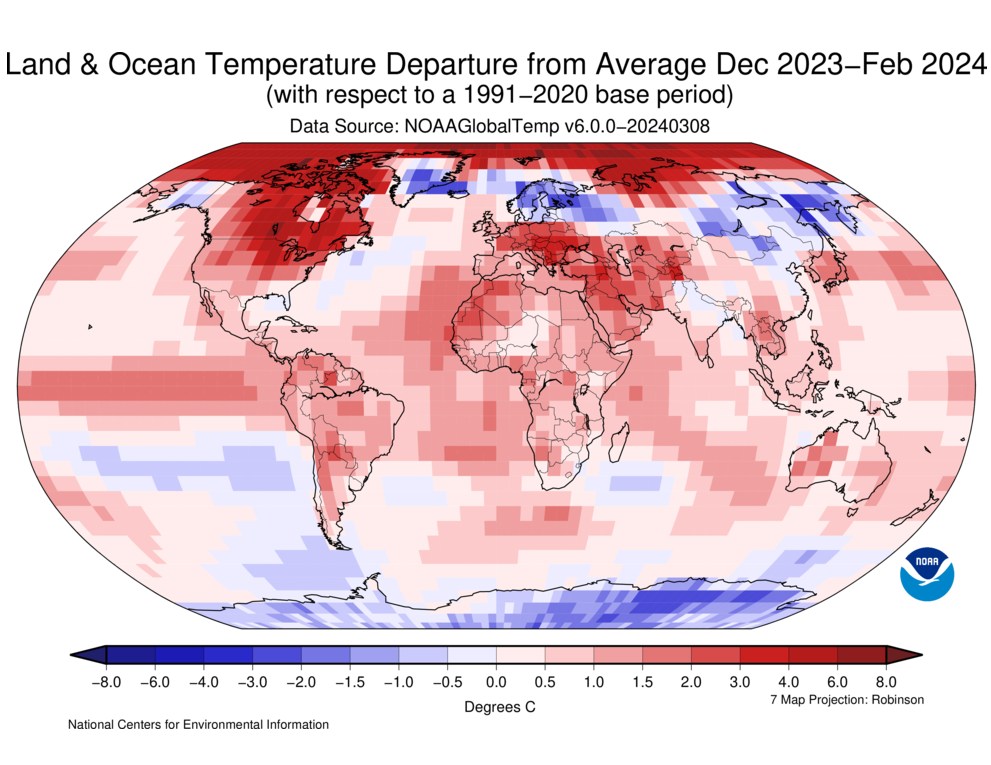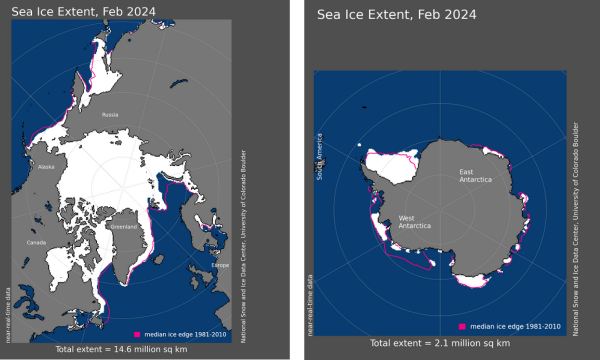The Earth’s record temperature streak continued in February for nine months and counting

Highlights:
- Temperatures were above average over much of the globe, but eastern Asia, much of Greenland, and parts of Antarctica were cooler than average.
- There is a 45% chance that 2024 will be the warmest year in NOAA’s 175-year record and a 99% chance it will rank in the top five.
- North American snow cover extent and Antarctic sea ice extent were much below average, ranking third and second lowest on record, respectively.
- Global tropical cyclone activity was above average, but only two storms made landfall—both of which were in Australia.

Temperature

The February global surface temperature was 2.52°F (1.40°C) above the 20th-century average of 53.8°F (12.1°C), making it the warmest February on record and the ninth consecutive month of record-high global temperatures. According to NCEI’s Global Annual Temperature Outlook, there is a 45% chance that 2024 will rank as the warmest year on record and a 99% chance that it will rank in the top five.
February temperatures were above average across most of the Arctic, the Americas, Africa, Europe, and Australia whereas much of Greenland, eastern Asia, and parts of Antarctica were cooler than average. North America, South America, and Europe had their warmest February on record while Africa was second warmest. Sea surface temperatures were above average over most areas (and record warm over the tropical Atlantic Ocean), while much of the Southern Ocean and parts of the southeastern Pacific and southern Indian Oceans were below average.
Temperatures in the mid-troposphere (approximately 2–6 miles above the surface) were record warm in February, according to satellite data from NESDIS. Each of the past eight months set global records for the mid-troposphere.

The December 2023–February 2024 global surface temperature was the warmest such period on record, 2.45°F (1.36°C) above the 20th-century average for December–February. The 2024 year-to-date temperature currently ranks warmest on record.
Snow Cover
Northern Hemisphere snow cover extent in February was below the 1991–2020 average. Both Eurasia and North America were below average (by 240,000 and 490,000 square miles, respectively), the latter ranking third lowest on record. In general, much of Asia was near to above average, whereas much of Europe and the eastern United States were below average.
Sea Ice

Global sea ice extent was the fourth smallest in the 46-year record at 6.47 million square miles, which was 460,000 square miles below the 1991–2020 average. Arctic sea ice extent was slightly below average (by 100,000 square miles), whereas Antarctic sea ice extent was much below average (by 370,000 square miles), ranking second smallest on record.
Tropical Cyclones
Eleven named storms occurred across the globe in February, which was above the 1991–2020 average of seven. Only two storms made landfall, both bringing gusty winds to northern Australia. The only major tropical cyclone was Very Intense Tropical Cyclone Djoungou, which remained in the central Indian Ocean, well away from any major land masses. There were no active storms in the Pacific Ocean or the North Atlantic, but there was one weak tropical cyclone (Akara) in the South Atlantic, which is notable because atmospheric conditions usually inhibit tropical storm development in that basin.
For a more complete summary of climate conditions and events, see our February 2024 Global Climate Report or explore our Climate at a Glance Global Time Series.



